Scalloped Hammerheads are one of the critically endangered species in the world. These sharks are found throughout the world’s oceans, but they are especially prevalent in the Western Atlantic Ocean and tropical seas.
- Status: Endangered
- Known as: Scalloped Hammerhead, Kidney-headed hammerhead, bronze hammerhead, southern hammerhead
- Estimated numbers left in the wild: Unknown.
They have a scalloped hammer on the top of their heads, a type of cephalofoil that may be seen. They are typically docile creatures, but when provoked or threatened, they defend themselves by biting and releasing an unpleasant-smelling substance from their pores.
The shark can live near coral reefs and seagrass beds for food sources, including octopus, crabs, shrimp, clams, squid, and fish, as well as other shark species like tuna.
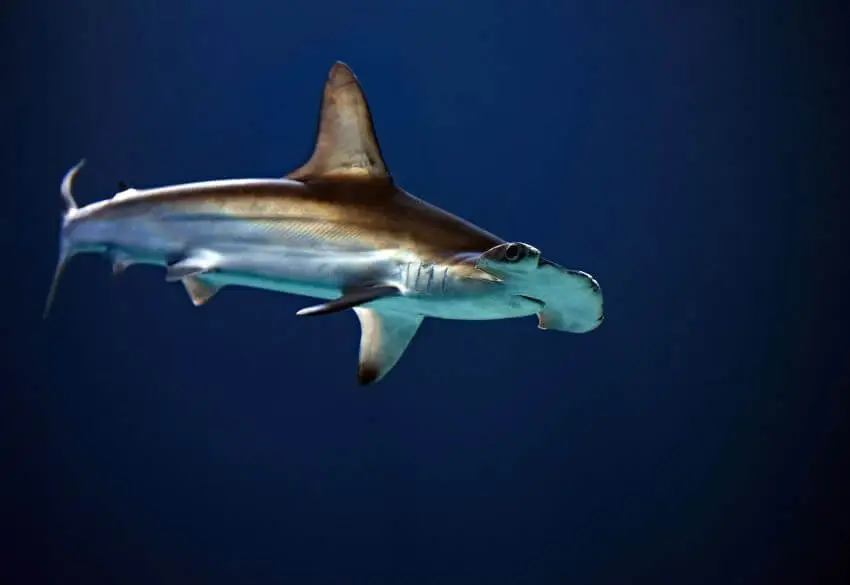
Description
Scalloped Hammerheads are one of the world’s rarest fish, and they are essential for maintaining ecosystem equilibrium. The sharks may be found in all of the world’s seas, but they are especially common in the Western Atlantic.
They have a unique feature called a scalloped hammer which is a form of cephalofoil that is seen on their heads. Scallop hammers maintain their territory by marking with fecal matter. Scallop hammers don’t have teeth so they have to get their food by ramming it with their head.
See Related: Great White Shark
Anatomy and Appearance
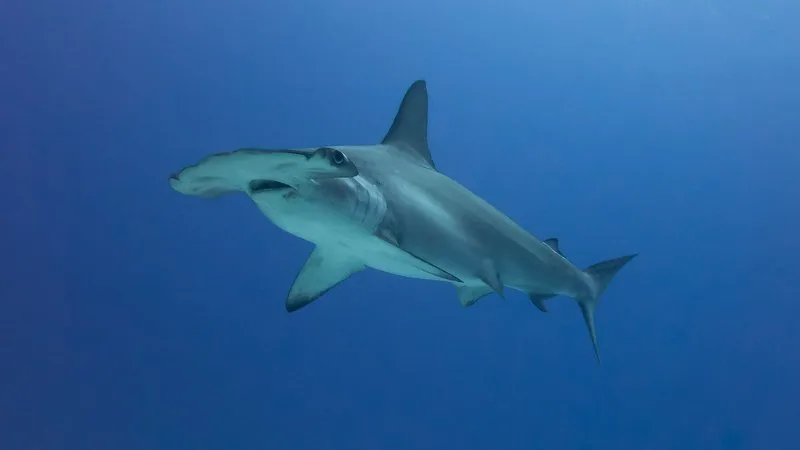
The Scalloped Hammerhead form is a large, slender shark ranging from 3.7 meters to 4.3 meters in length, with a top weight of 150 kilograms. The shark is bronze-colored on top and white below predator creature, but its most identifying feature is the “hammerhead.”
The animal’s head is flattened and extended outwards in both directions, giving the front of the creature an unmistakable T shape. In the case of the hammerhead, the head also includes a number of lengthwise grooves in the flesh, which explains the species name.
This shark ventures close inshore in shallow coastal waters but lives in the deeper water further offshore. A depth of 275 meters is acceptable, and this hammerhead will go as deep as 500 meters or so, though it avoids the open ocean.
The wide, flattened head spreads out a series of electrically sensitive organs called the ampullae of Lorenzini, which can detect the presence of prey even in darkened or murky waters.
See Related: What Are The Effects of Overharvesting?
Location
A truly global animal, the shark frequents most coastal waters from 46 degrees north to 36 degrees south.
It is found along the eastern coasts of North America, Central America, and South America, the east and west coasts of Africa, throughout the Middle Eastern waters, the Indian Ocean, around Australia, and up the coast of China to Japan. This large shark prefers shallow water but can be found at depths up to 500 meters.
Scalloped Hammerhead Habitat
distribution scalloped hammerhead sharks are found throughout the world’s oceans, but they are especially prevalent in the Western part of the Atlantic Ocean.
These sharks are found in both shallow and deep water. They have long been a food source for humans, significantly harming their population.
Scalloped Hammerhead Diet and Nutrition
This large predatory fish prefers medium-small prey that can be consumed entirely rather than being bitten to pieces due to the structure of its mouth.
Fish naturally top the list of prey species, but the shark also consumes large numbers of squid, octopus, crustaceans such as crabs and lobsters, rays, and small shark species or juveniles.
The Scalloped Hammerhead’s primary diet is lobster and small fish. Their mating habits are not well documented because of their life span. They might compete for food with other sharks and bony fishes such as yellowfin tuna and albacore.
Scalloped Hammerhead Mating Habits
Adult Scalloped Hammerheads usually mate in large groups, and large schools with a female Scalloped Hammerhead shark, and males reach sexual maturity. These creatures have one of the most diverse mating habits among the shark species.
They are monogamous for life, which is uncommon among other species of sharks. The shark species don’t guard other males to prevent them from mating with their mates because these species are usually very accepting of each other’s company.
In short:
- Scalloped hammerheads mate in groups, but there is always one female and one male
- They are monogamous for life
- The species do not guard their mates from other males
- They are very accepting of each others company
Like many sharks, this hammerhead shark gives birth to live pups, nourished with an egg yolk placenta while developing inside their mother. Gestation is approximately one year, and up to 40 pups may be born to a single female.
The young fish are 30 to 60 centimeters long at birth and remain inshore, though close to the bottom, until they grow larger. These hammerheads will opportunistically consume juveniles of their species, but most mortality is due to other species of sharks. The natural lifespan of the shark is 30 years, possibly more.
Scalloped Hammerhead vs Other Shark Species
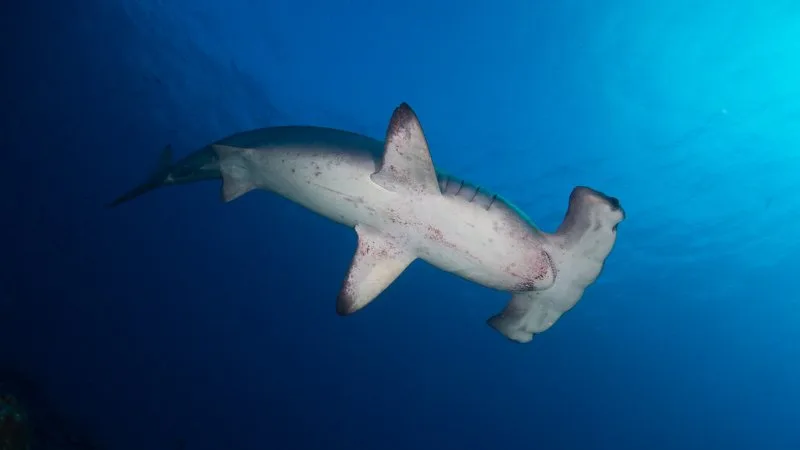
There are various types of sharks, and Scalloped Hammerhead Sharks are unique in that they have a scalloped hammer on their head.
These sharks can be distinguished from other shark species by their unique cephalofoil. Other sharks have rounded heads, while Scalloped Hammerheads have flattened heads with scallops on them.
Scalloped Hammerhead and Human Relationship
The shark is often hunted by humans for their shark fins and meat, even though they are one of the most endangered species in the world.
They are caught to make shark fin trade to soup, which is eaten in China or Japan, or to make a fish meal, used as an ingredient in pet food.
Humans catch them for their fins and meat. Second, they are often killed by fishermen who mistake them for other species of sharks. Third, these species are very slow breeders, and it takes them a long time to reach sexual maturity.
Scalloped Hammerhead Facts
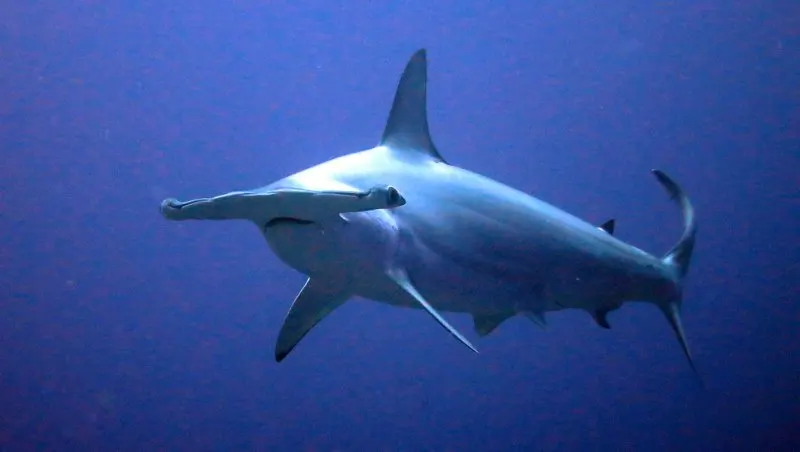
Here are the fascinating facts about the Scalloped Hammerhead shark.
- They have a scalloped hammer on their heads, a kind of cephalofoil that can be seen on other animals.
- These species are lifelong monogamists.
- A scalloped hammerhead can live up to 20 years, grow up to 6 feet long, and weigh up to 400 pounds.
- Scallop hammers maintain their territory by marking with fecal matter.
- Scallop hammers don’t have teeth, so they have to get their food by ramming it with their head.
- Scallop hammers are typically black with white spots towards the front.
- They prey on shrimp, crabs, clams, and small fish.
- They are viviparous, meaning they give birth to live young through a placenta-like organ.
- Scallop hammers can be found in the most warm coastal seas, in depths of up to 100 feet.
Scalloped Hammerhead Shark Conservation Status
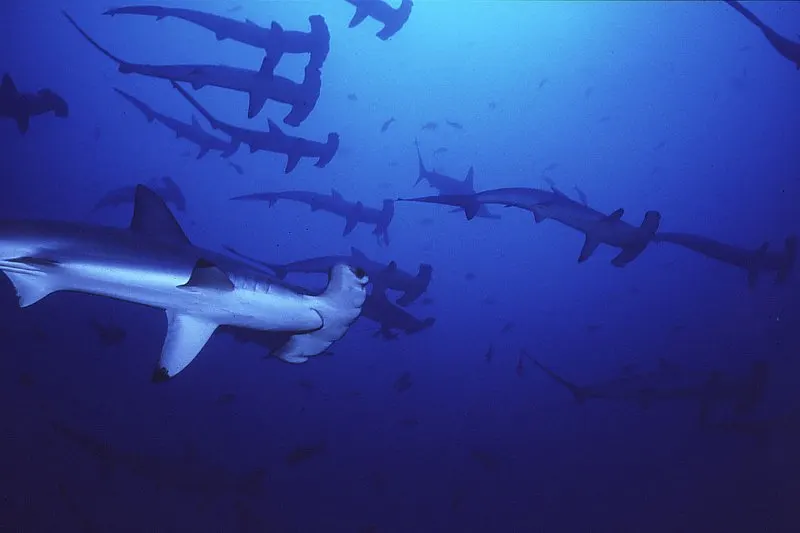
Since Scalloped Hammerheads have been steadily decreasing in population, they have been listed as one of the most endangered species.
Scalloped Hammerheads are crucial to our ecosystem’s stability due to the unique feature of a Scalloped hammer, a form of cephalofoil seen on their heads.
They have been steadily decreasing in population and were placed on the Endangered Species List for this cause. Shark populations have decreased by 98% since 1930, and there is a fear that they could become extinct if the decline continues.
Throughout the world’s oceans, they are especially prevalent in the Atlantic Ocean, meaning they are at risk of rising water temperatures.
Their reproductive rate is lower than that of other shark species, making the great hammerhead species especially susceptible to human interference and climate change.
Threats
Overfishing of this species is the principal hazard to its long-term survival, occurring in many areas where these animals are found.
They are an endangered species due to the species being slaughtered. Scallop Shores is a large Scalloped hammerhead shark food source and killed for their second dorsal fin.
The insatiable demand of the Asian market for shark fins has driven the price of these as high as $50 per pound or more, creating a massive economic incentive to flout laws and circumvent protective measures. Furthermore, the shark has large, desirable fins, making it a primary target for finning.
See Related: Types of Sharks Around the World
Conservation efforts
No organized conservation measures exist for this species, and its protection under the law is weak to non-existent and indirect.
But there are wildlife conservation efforts all around the world. Organizations that are trying to protect various species and the ocean that are threatened with extinction.
They work strategically to conserve wildlife populations and estuarine habitats by providing education, internships, study sites, and a shark database.
See Related: Best Conservation Books to Read
Organizations
Oceana
Oceana is the largest international organization focused on ocean conservation, protecting marine ecosystems and endangered species such as the Scalloped Hammerhead.
See Related: Environmental Organizations in Europe
Final Thoughts

Scalloped Hammerheads are one of the most endangered species in the world, and they are crucial to our ecosystem’s stability.
Scallop hammers maintain their territory by marking with fecal matter. They don’t have teeth, so they get food by ramming it with their head and hunting shrimp, crabs, clams, and small fish.
They are typically black with white spots towards the front and can be found living up to 30 years deep in waters throughout the world.
Scalloped Hammerhead is a vulnerable species on the IUCN Red List because of overfishing for fins that have driven prices as high as $50 per pound or more, which creates an incentive to flout laws and circumvent protective measures. Thus, the hammerhead shark needs help.
FAQ
What is a Scalloped Hammerhead?
Scalloped Hammerheads are one of the world’s most endangered sharks and are essential to the health of our environment.
Sharks can be found all around the world’s seas. However, they are particularly common in the Western Atlantic. A scalloped hammer has a feature of cephalofoil that may be seen on the head of these hammerhead species.
Where do Scalloped Hammerheads live?
Distribution of scalloped hammerhead sharks throughout the world’s oceans, primarily within the Western Atlantic.
They can be found along all coasts of the Caribbean Sea in North America, including Florida, Georgia, and Texas. Sharks live in shallow waters, rocky habitats, mangrove forests, and deep offshore seabeds. They spend much of their time schooling near the water’s surface or around structures such as reefs or lagoons.
Scallop Hammerhead territory ranges from southern New Jersey to Brazil, with some populations living as far south as Columbia and Venezuela.
Why are Scalloped hammerheads endangered?
Scalloped Hammerheads are endangered because they are killed for their meat and fins, they get caught in fishing lines and nets, and because of environmental change.
They give birth only every 2 years. Shark pups need to guard themselves against predators or die. Scallop scammers avoid mothers and pups in the natural course of their life cycles which puts Scallops at risk of not procreating.
As oceans become more acidic research has shown that the sharks produce fewer offspring than Scallops with higher amounts of carbon dioxide in the water.
How long does Scalloped Hammerhead live?
These smooth hammerhead species are known to live 25–30 years. The shark species are endangered and can grow up to 10 feet in length.
These sharks have a unique feature on their head called a ‘scallop’ shaped like an upside-down U, but it’s actually their cephalofoil.
The scallop is the first toothlike projection below the center point of their mouths. Sharks can be found all over the world usually near coral reefs or other shallow waters with steep drop-offs for hunting prey such as fish and squid.
How can I help with Scalloped hammerhead conservation?
To help with conservation, donate to charities devoted to Scallophed HammerHead preservation or research. You can also help by following organizations on social media and sharing posts about wildlife preservation efforts to encourage others to contribute as well.
Other Species profiles
Related Resources
